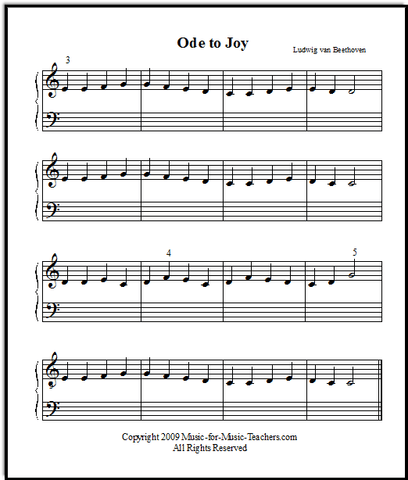Help Your Kids Read Music

If you want to help your kids read music, first of all find out what they are up against. Reading music is not easy for kids, in part because one great difficulty is rarely discussed. This is the need to look constantly from the page to the keys.
Many teachers do not permit looking from the page to the hands. So in their method the eyes are on the page, no matter what. Conventional piano teaching does not allow the kids to look at their hands.
I Can Read Music e Book Download
Look At The Keys Or Not
The only way this can be accomplished is to use fingering in a rigid way so there is no need to look at the hand. The music capable of being played in this way, looking only at the page, is laughably bad and thus kids hate this fake "music."
The truth is that professional pianists NEVER look at the page, because the music is to complex to dare take their eyes off the keyboard. The real problem is that teachers are confusing "sight reading" with "reading music." Sight reading is playing music you have never seen before.
Sight Reading
Sight reading does in fact require the pianist to look constantly at the page, since it is music they have never seen before. So a quick peek at the hands in tricky spots may be necessary. But kids should not be expected to "sight read."
It is a skill best left for later, and is usually a skill refined by highly skilled musicians, rarely kids. Far better to let kids look at the keys as they are learning to read music.
The Tools Kids Are Given
Below is what kids are shown when they start to read music:

There are two different graphic systems. The five lines above, and the keyboard below. Kids are mystified because there is no relationship or readily-apparent similarity between the two systems.
A Better Way To Start Reading Music
It would be far better to give kids reference points on the keys that help to show the correspondence between the page and the keys.

We place five blue stickers to denote the five lines. We place one red sticker to denote the location of Middle C.
Finding Middle C
To make the process as clear as possible, restrict yourself to finding Middle C at first, both on the page and on the keys. Middle C has a unique look, with two little lines sticking out from the sides of the circular note. No other note in beginning piano looks like Middle C.

Here's a page full of Middle Cs. Get the child to show you all the Middle Cs.

Middle C Game With A Library Bell
I make a silly game of finding Middle C called “Doodley Doodley” in which I say “Doodley, doodley” repeatedly and quietly as I scan my finger across the page slowly under each note.
When the child sees a Middle C (the circle with the line through it) they get to ring a library bell, we both laugh, and then we continue, “Doodley, doodley…..”
Take any piece of sheet music, point slowly to each note, asking, "Line or space?" There are only two positions for notes on the five-lined staff: on a line, or on a space in between the lines.
I make a game of having a pop quiz often, wherein I show the child a page of music and demand that they tell me if each note pointed to is on a line or a space.
Kids are not used to using their eyes in this critical fashion: this is where they learn how. I avoid asking for the names of the notes, as I leave that separate process to chord study: the rationale is that if a child can find a C chord, they know where C is.
Using The Black Keys To Find Note Names
Find the names of the notes anywhere on the keyboard. I play a game where I point out that C is to left of the two blacks, "Play every C on the piano." Now they have to use their eyes to find every group of two blacks, and then the white key to the left.
Naming notes by themselves I find useless, at least at first. It is far more important to let the child have facility with the symbols on the page, and their correspondence to the keys.
Naming notes comes slowly as they gain control of all the other elements. The child should have careful, directed fun at first. This will give kids a better chance of sticking with the piano. Use a transparent system like numbers rather than diving into reading boring music.
The child should be slowly introduced to reading music when they are comfortable with the geography of the keyboard.




